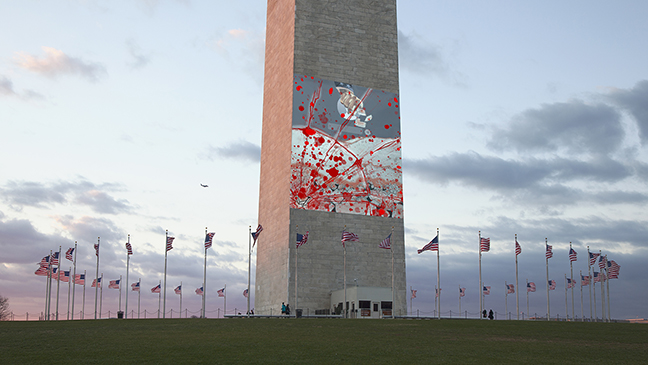
Course Overview
This course explores murals as public living spaces, visual geographical multi-layered zones for political activism, social/cultural awareness and aesthetic advancement. Starting with Mexican social realist painters from the early 1930’s to the present murals brought forth from the BLM movement, we will look at these installations as sources of meaning and forms of social justice activism. We ask, what is the role of mural art as it is displayed strategically in public spaces? Where does public space become available and to whom? Who claims public spaces and how? How do we define public space and who has the authority to have a voice and be heard in the public realm and why?
As a final and culminating project students will be asked to create a virtual mural design within assigned collaborative groups. Students are challenged to make claims and defend them through writing exercises, research, and design. We will dig into the issues of legality and illegality, and how to occupy intermediary spaces. Subject matter and content will guide course work and discussions including an exploration of composition and design elements as they relate to delivery. What political and social issues inform your voice? What message do you need to communicate? Previous examples will be available.
To help you gain insight we will focus on some overarching ideas: What are your aesthetic choices as they relate to history and your own experiences? How does what you’ve learned about using art as a form of community voice and expression impact your perspective on the role of art?
Also, as we begin to emerge from online learning into a more hybrid space, we will be traveling to mural sites in Oakland for our continuous aesthetic edification. We will also be traveling to a number of “in process” mural sites so that students will have hands-on experience working on walls and assisting in the design and creation of a “living” mural. This means that we will be meeting often off campus, that students need to be prepared to plan traveling to these locations that are to be determined and explained in Moodle. Other details will be further revealed in Moodle and in class as our classwork is fluid.
Critical Ethnic Studies courses introduce students to the interrelations between race/ethnicity, art making and design practices. These courses complement the Diversity Studies Seminars with their hands-on approach in which themes of ethnic identity are incorporated into studio and community practices.
This course explores murals as public living spaces, visual geographical multi-layered zones for political activism, social/cultural awareness and aesthetic advancement. Starting with Mexican social realist painters from the early 1930’s to the present murals brought forth from the BLM movement, we will look at these installations as sources of meaning and forms of social justice activism. We ask, what is the role of mural art as it is displayed strategically in public spaces? Where does public space become available and to whom? Who claims public spaces and how? How do we define public space and who has the authority to have a voice and be heard in the public realm and why?
As a final and culminating project students will be asked to create a virtual mural design within assigned collaborative groups. Students are challenged to make claims and defend them through writing exercises, research, and design. We will dig into the issues of legality and illegality, and how to occupy intermediary spaces. Subject matter and content will guide course work and discussions including an exploration of composition and design elements as they relate to delivery. What political and social issues inform your voice? What message do you need to communicate? Previous examples will be available.
To help you gain insight we will focus on some overarching ideas: What are your aesthetic choices as they relate to history and your own experiences? How does what you’ve learned about using art as a form of community voice and expression impact your perspective on the role of art?
Also, as we begin to emerge from online learning into a more hybrid space, we will be traveling to mural sites in Oakland for our continuous aesthetic edification. We will also be traveling to a number of “in process” mural sites so that students will have hands-on experience working on walls and assisting in the design and creation of a “living” mural. This means that we will be meeting often off campus, that students need to be prepared to plan traveling to these locations that are to be determined and explained in Moodle. Other details will be further revealed in Moodle and in class as our classwork is fluid.
Critical Ethnic Studies courses introduce students to the interrelations between race/ethnicity, art making and design practices. These courses complement the Diversity Studies Seminars with their hands-on approach in which themes of ethnic identity are incorporated into studio and community practices.
- Instructor: Amana Harris
- Instructor: Jack Leamy
